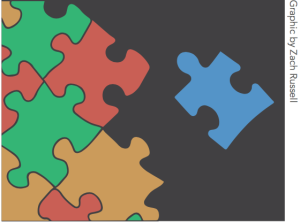Growing up autistic in a society that doesn’t understand
By: Mary Wilson
Staff Writer
If there’s one thing that humans have in common, it’s fear of the unknown. While the diagnostic rate of Autistic Spectrum Disorders has been rising, largely due to more in-depth diagnostic criteria and understanding, autism is still not fully understood.
I was identified as possibly autistic in sixth grade, then received a formal diagnosis at age 18. Throughout my life, from an undiagnosed kid struggling to comprehend social cues to a teenager unable to maintain friendships to now, I have been surrounded by inaccurate stereotypes and misinformed people, from occupational therapists to pediatricians, psychotherapists and teachers, family members and friends.
Because people don’t understand autism and autistic people, we are feared. This shows up in ways that may not seem like traditional expressions of fear. The autistic children who are diagnosed are often forced into Applied Behavioral Analysis, developed in the 1970s by Ivar Lovaas. It involves changing behaviors into new, preferred ones. Eye contact, however painful, is good. Self-stimulatory behavior, such as hand flapping or rocking, is bad.
I’ve compared self-stimulatory (stimming) behavior to Google translate for autistic people. Flapping my hands is how I focus, how I organize the information around me or maintain my cool in stressful times.
The belief that autistic people’s natural instincts are wrong is not a new one; it is only relatively recently that autistics and otherwise disabled people are kept out of institutions and live in the community. It’s possible, in many people, through years of training, to make someone ‘appear’ typically-developing, but that doesn’t change the underlying neurology: an autistic person will always be an autistic person. It’s just how our brains are wired, which is neither a good thing nor a bad thing, just as a typically-developing person’s brain is neither good nor bad. It simply is. For those autistic children not diagnosed, who slip under the radar, they may spend their whole lives wondering why they struggle in a society made for typically-developing people.
Autistic people are more likely to struggle with mental health disorders such as anxiety and depression; one theory for this is that autistic people are forced to disregard their instincts and assimilate to a culture not designed for them.
On average, the autistic person’s lifespan is almost two decades shorter than non-autistic people, with suicide as the leading cause of premature death. The consequences for not fully accepting and understanding autistic people are clear: we are teased and trained to not act autistic as children and dying as adults.
If we don’t end our own lives, then our lives are often ended for us: murders of disabled people, especially autistic people, are more common than many realize. Their names are forgotten by most, and their murderers, usually family or caretakers, have lesser punishments than if they had murdered a non-disabled person. These killings are sometimes called “mercy killings.”
Is it ever a mercy to kill someone just because they are different? Until people realize that we are not puzzles, waiting to be solved, we are not people incapable of empathy, not empty shells, not mysteries, but instead human beings, whole and worthy of education, happiness and love, just like every other human, this will likely continue.
We can do better. We must do better. Lives depend on it. So, the next time someone is flapping their hands in class or at the grocery store, think before judging. The next time someone doesn’t make eye contact, or takes a minute to process what has just been said, remember: understanding autism is the first step towards acceptance. Acceptance saves lives.











